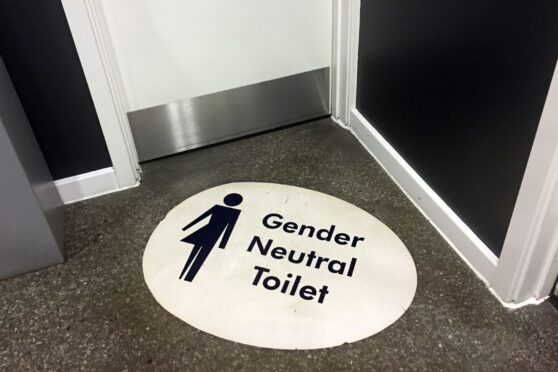
Children at a Scottish primary school have lobbied the government to provide gender-neutral toilets in a move that critics say demonstrates how transgender ideology has reached even the youngest pupils.
Nine-year-olds at Lorne Primary School in Edinburgh have contacted MSPs with letters demanding they provide controversial gender-neutral toilets, which is illegal unless a school also provides both male and female toilets.
The Sunday Post has a number of letters written by P5 pupils at the school asking for the facilities.
Separately, the Sunday Post has learned that a total of 51 girls have been referred to have double mastectomies, with surgery when they reach the age of 18.
Parents and education experts are now demanding the Scottish Government withdraws and reviews official Education Scotland material, including the “Supporting Transgender Pupils Schools Guidance”, which was developed in partnership with LGBT Youth Scotland.
The organisation has been given £1 million in public money in recent years and some 250 schools across Scotland have joined its accreditation scheme.
The material urges children to contact the Sandyford gender clinic as well as controversial transgender charity Mermaids, a fierce proponent of giving children puberty blockers. And films being used in the school curriculum include How To Be A Girl, where a toddler decides he is a girl.
Paediatrician and autism expert Dr Jenny Cunningham, a member of the Scottish Union for Education, said: “The Scottish Government finally did the correct thing and suspended the prescribing of puberty blockers to new patients.
“Now they must withdraw and review the educational material being used in our schools and nurseries before more children are affected by harmful ideologies.
“The Cass report made clear that the exposure to such material was harmful as it would influence susceptible young children, particularly those who may have conditions such as autism.
“A high percentage of primaries and an increasing number of secondary schools are involved in trans accreditation schemes, and this is all about promoting their pernicious ideology. It’s done in the name of including and supporting “transgender” children, but it also gives tremendous scope for the promotion of their ideas.”
Carolyn Brown, a former depute principal educational psychologist, said: “Any schools approving single-gender toilets may actually be breaking the law as well as affecting a child’s psychological development and physical safety because it is vital children are given that personal dignity. I’ve watched the increasing influence these trans groups now have in all our schools, and it is deeply concerning. When highly suggestible and susceptible children are exposed to such ideology, such as being encouraged to write to politicians to demand single-gender toilets, that is tantamount to grooming.”
In the How to Be A Girl films, a mother asks her son who gets to decide if he can become a girl. In a baby voice the child replies: “Me!”
The film shows the boy deciding to take puberty blockers, the powerful drugs that cause infertility and a host of other life-changing conditions so he can finally be “happy”.
Figures show the number being referred to the Sandyford clinic skyrocketed from just 37 children 10 years ago to almost 1,400 today – 20 were aged 11 and under.
The Scottish Government said “We are committed to doing everything we can to make Scotland the best place to grow up for LGBTQI+ young people. This includes funding LGBT Youth Scotland to deliver a range of projects. This work is particularly important at a time when we are seeing a rise in attacks against the LGBTQI+ community.”
Meanwhile, the author of the report that earlier this month criticised NHS policy towards children changing gender, Dr Hilary Cass, has hit back at critics.
Cass told the Times: “I have been really frustrated by the criticisms, because it is straight disinformation. It is completely inaccurate.
“If you deliberately try to undermine a report that has looked at the evidence of children’s healthcare, then that’s unforgivable. You are putting children at risk.”

Enjoy the convenience of having The Sunday Post delivered as a digital ePaper straight to your smartphone, tablet or computer.
Subscribe for only £5.49 a month and enjoy all the benefits of the printed paper as a digital replica.
Subscribe